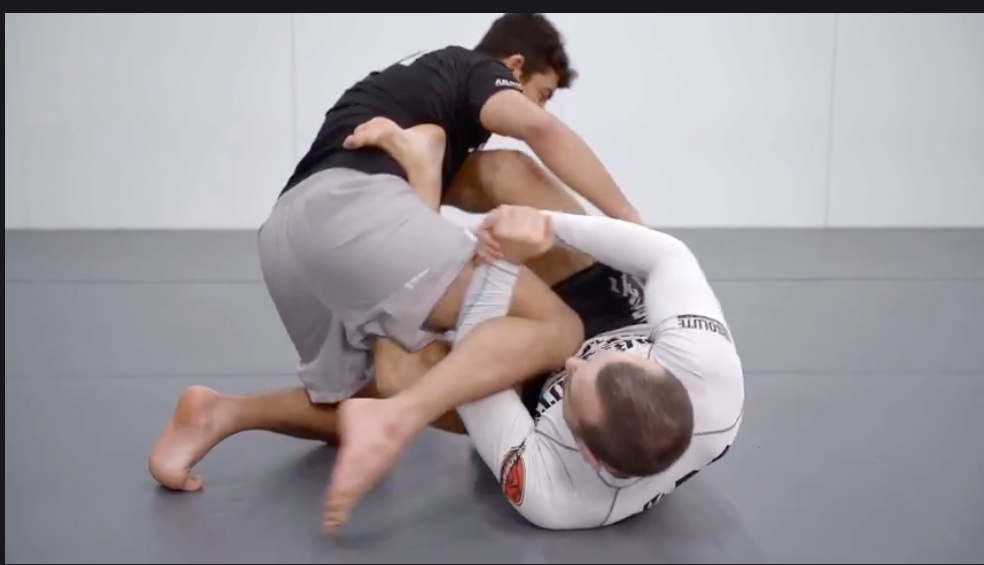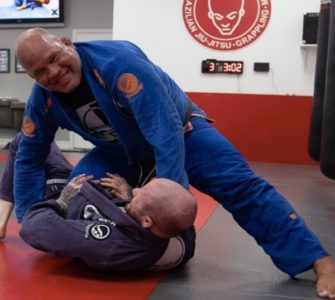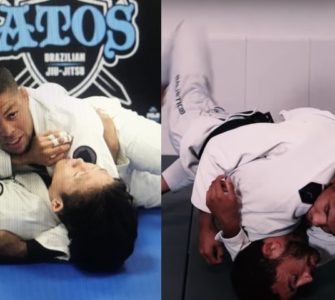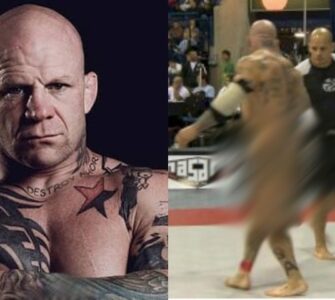Guest post by Evolve MMA, Asia’s premier championship brand for martial arts. It has the most number of World Champions on the planet. Named as the #1 ranked martial arts organization in Asia by CNN, Yahoo! Sports, FOX Sports, Evolve MMA is the top rated BJJ gym in Singapore.
BJJ is a grappling martial art renowned for its complex guard game. It is not uncommon for new techniques and modern takes on old ones to be used and slowly make their way to the current meta. The emergence of leg locks in recent years has made it possible for different positions and guards, like variants of ashi garami, as well as the K guard, to become highly favorable techniques to be used in modern Jiu-Jitsu.
While the K guard is relatively new and not as popular as its contemporaries, it has already proven its effectiveness, as evidenced by Lachlan Giles’ performance in the 2019 ADCC World Championships. This article is an introduction to the K Guard in BJJ.
The K Guard In BJJ
The K Guard is a type of open guard in which the bottom player positions their legs and upper body in a manner that resembles the letter “K”. While it can be assumed that the technique’s name came from its resemblance to the letter, according to Neil Melanson, the technique got its name dedicated in honor of the MMA legend Karo Parisyan, who’s a pioneer of using a version of the move many years prior to its recent rise.
In modern BJJ, Lachlan Giles popularized the technique on the world stage as he utilized it against opponents three weight classes bigger. He used the K guard as an entry to leg attacks and finished his opponents via heel hook in ADCC 2019.
As the closed guard is likely the first guard practitioners learn in BJJ, the K guard can be set up directly from it. This guard can be used to sweep, apply leg locks, attack the upper body, or get behind the opponent, making it a powerful guard that anyone can learn.
Introduction To The K Guard
The K guard is used as a way of getting underneath your opponents. Getting underneath someone’s center of gravity is a vital skill to understand because doing so makes it easier for you to attack with sweeps and leg locks. You can start by placing your feet near the opponent’s hips, but your aim is to invert so that you face only one side.
An example is hooking the opponent’s thigh with your left leg and your right hook up behind the opponent’s lat on the opposite side. This scissoring positioning of the legs can be used to control the distance and unbalance the opponent.
Your hooking leg’s knee placed on the opponent’s chest plays a huge role in bringing the opponent over and keeping them away so that you can post your knee right behind their armpit. Your bottom arm underhooks the opponent’s near leg, while your top hand can go under their armpit on the same side to clear the opponent’s defending arm. After clearing the arm, you may connect your hands underneath with a gable grip. You can now use your top leg to push their arm further as you bring their knees closer.
You can now move to the X guard position by moving your left leg to the opposite hip and putting your right leg below your left, the standard X guard leg configuration. This should unbalance the opponent slightly as you make their trapped leg light, allowing you to grab their toes and bring it over to the side. You can now grab their leg from this position and perform a technical standup to the opposite side (left side).
To perform the technical standup, abandon the X guard and use your bottom leg (left leg) to step behind their kneeling leg. Your right leg steps on the mat, and you post with your left hand. Lift your hips up and bring your left leg up to stand up. This should land you in the single leg position. You can take the opponent’s back or take them down to the mat from here.
How To Execute The Perfect K Guard
The K Guard is typically applied when the opponent kneels and is used to sweep and take the opponent’s back. It is also an amazing entry to leg entanglements. When sweeping the opponent from K guard, the theory is that if you want to get into leg entanglement, you have two options. First, you can put your feet between the opponent’s thigh and go underneath, and start elevating the opponent up into leg entanglement once you’re in. It works well, but it can be difficult to do against bigger opponents because as you start going underneath, they can drop their weight forward and apply good controlling grips.
This allows them to apply a body lock and start squashing you. Getting the inside position with your feet is good, but there is a big threat of the opponent using gravity against you and pinning you down if you are not careful.
When you put your foot on the outside near their hip and the other hooking underneath their armpit, it gives you the ability to keep your feet in front when things go wrong. This prevents the opponent from forcing you into half guard and pass from there. The ideal K guard position is where your hips are out, your knee is underneath the thigh, and your foot is outside. From this position, you can underhook their near leg with your bottom arm as you lock your hands to connect your upper body to their leg.
Keep your knee underneath as you off-balance the opponent while making their trapped leg light. To do this, pull the opponent towards you using your legs. You can do this by bringing your top leg’s knee towards (leg hooking their armpit) your chest.
From here, you can now push the opponent to the side to unbalance them. Keep your bottom leg’s knee inside and the other foot hooking underneath the armpit. This makes the opponent’s near leg light, making it easier for you to lift it to your stomach. Pass their leg to the other side by reaching your hand to their foot and pulling it across your body. Once you get the opponent’s leg across your body, you can proceed to common attacks like the inside heel hook. Alternatively, you can also sweep the opponent or take their back.
Conclusion
The K guard is one of the main positions grapplers must explore to elevate their game to the next level. It offers various entries to other open guards, submissions, and sweeps. Remember that learning never stops in Jiu-Jitsu. Like with other techniques, understanding how the K guard works will give you the tools to defend against opponents of all shapes and sizes.
Attack with leg locks, back attacks, and sweeps from your back with this systematic approach to the no-gi K guard from Lachlan Giles!
- Lachlan Giles is an ADCC Absolute bronze medalist, with one of the most legendary runs to the podium ever using the techniques he uses on this series.
- Use positions and game plans to understand and develop the K guard roll that can give you entries for some of grappling’s most devastating locks.


















